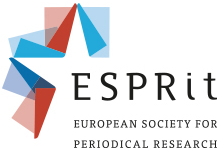Workshop: Image Sequencing in Periodicals – Comics, Photojournalism, Cinéroman, and Illustrated Film Periodicals
Bild-Sequenzierung im Journal: Comic, Fotoreportage, Cinéroman und illustrierte Filmzeitschrift
12–13 June 2020, Ruhr-University Bochum, Germany
Organised by the DFG Research Unit 2288 Journal Literature, the Committee for Comics Studies and the Committee for Photography Studies at the German Society for Media Studies (GfM)
Confirmed Keynote Speakers: Jan Baetens (Leuven) and Marina Ortrud M. Hertrampf (Regensburg)
The premise of the workshop is that periodicals, as soon as they are capable of incorporating pictures, are prone to display not only single isolated, but most often multiple pictures and, moreover, arrange them in typical, possibly media-specific ways. The object of the workshop is to explore page layout strategies used in periodicals from the 19th to the 21st century in order to identify their manifestations, historical modifications and adaptations to different visual media.
From the late 19th century onwards photographic images have been published frequently in periodicals. As the 19th century drew to a close, photo-reproduction processes quickly supplanted wood-engraving. Photo-mechanical technologies such as the half-tone screen enabled mass reproduction of photographs. The importance of photojournalism and, accordingly, of photographic magazines such as the Berliner Illustrirte Zeitung was increasing, leading to the formation of the influential journalistic genre of the ‘photo reportage’. American comic strips explored novel ways of “juxtapos[ing] pictorial and other images in deliberate sequence, intended to convey information and/or to produce an aesthetic response in the viewer”, as Scott McCloud famously defined. Serial novels such as Georges Rodenbach’s Bruges-la-Morte (1892) were published AG Fotografieforschung accompanied by numerous photographs. After the turn of the century, the ever more popular medium of film found in the pages of the periodicals an ideal partner to transform its moving pictures into a fixed printed form. Throughout the 20th century these forms continued to flourish and develop, introducing new modes of serial picture display like the photonovel or the cinéroman up to current projects such as the Revue dessiné, offering a news magazine relying solely on comics. All of these forms raise the question how sequencing pictures on a page—and on ensuing pages—does produce meaning: How do still pictures narrate and produce visual discourse?
The workshop seeks to advance the study of image sequences from a transmedial perspective. The focus lies hereby on the way in which the medial format of the periodical operates with image sequences: How are images arranged and connected to each other, how do they produce coherence, the impression of a succession and very often even narrative cohesion? We welcome theoretical approaches as well as studies that work with historical or contemporary material.
Abstracts of no more than 300 words should be sent to the conference organisers Christian A. Bachmann, Vincent Fröhlich, Iris Haist, Jens Ruchatz, and Monika Schmitz-Emans (This email address is being protected from spambots. You need JavaScript enabled to view it.) no later than 31 January 2020. Please include name, institutional affiliation, email address, and a short CV (150 words). This workshop seeks to advance transdisciplinary discussion and exchange. In line with this goal and the fact that the workshop encourages interaction, participants are required to submit preliminary papers of approximately 8 pages no later than 24 May 2020. Presentations should not exceed 10 minutes and should primarily serve to kick off discussions of 30 minutes. The papers will be sent to the attendees prior to the workshop and participants should read them in preparation of the discussions. The languages used during the workshop will be English and German. We will provide accommodation in Bochum and reimburse travel expenses up to €250 in total. Please add a short note to the abstract if you need us to refund costs up to €250. Please contact us no later than 24 May 2020 if you would like to participate in the discussion without presenting a paper.
Possible topics and case studies include but are not limited to:
- the formation of image sequences as part of an emerging practice of text production for periodicals from the late 19th century onwards;
- comic strips as image sequences and series of image sequences;
- image sequences as a mean of producing visual news in the ‘photo reportage’;
- the representation of film in periodicals using sequences of pictures;
- image sequences in periodicals as forms of remediation and/or negotiations of mediality;
- the intermedial structure of image sequences in photo comics, photonovels and film photonovels;
- mediations of and reflections on movement and time in image sequences published in periodicals.
